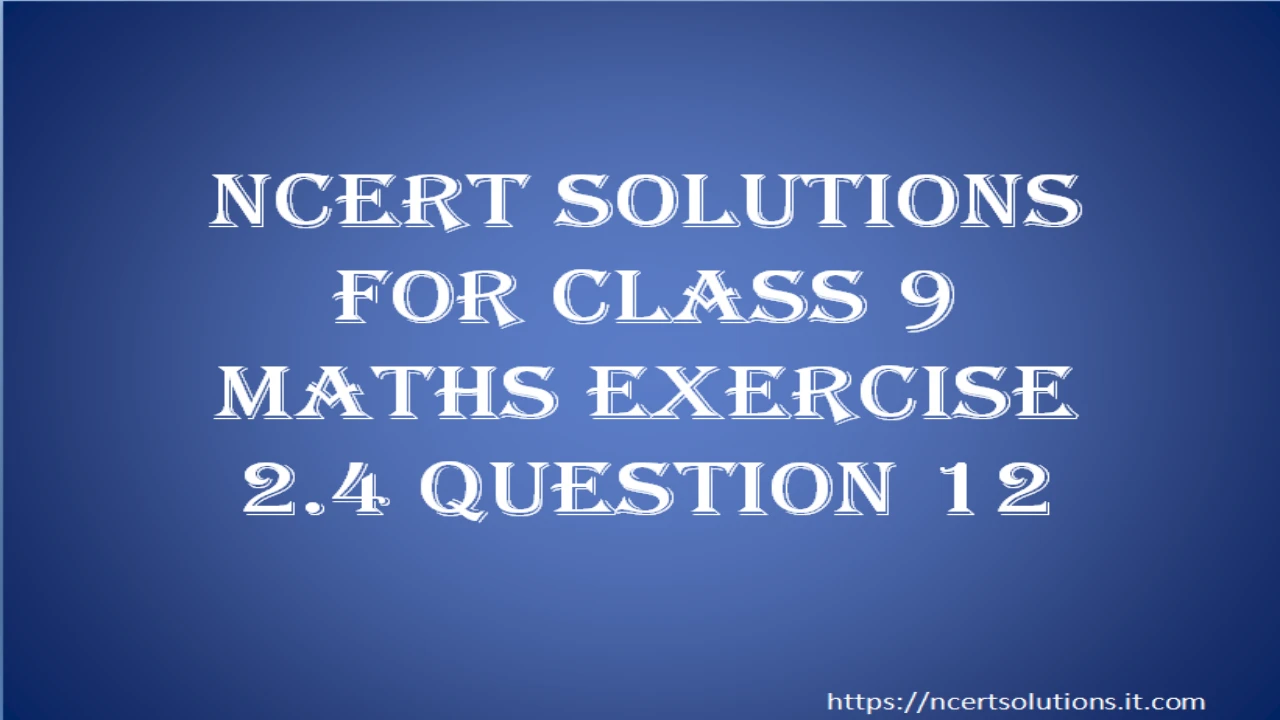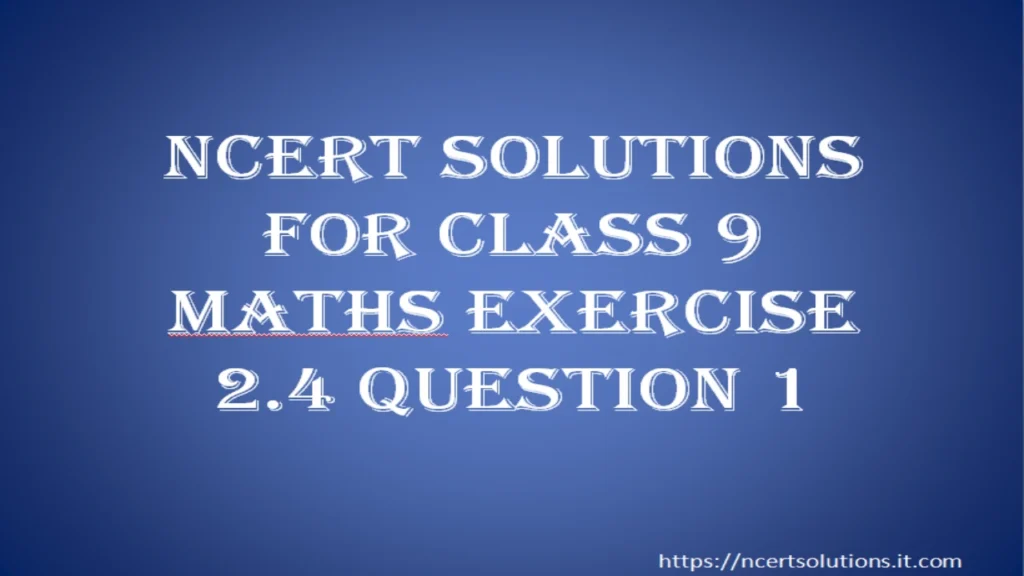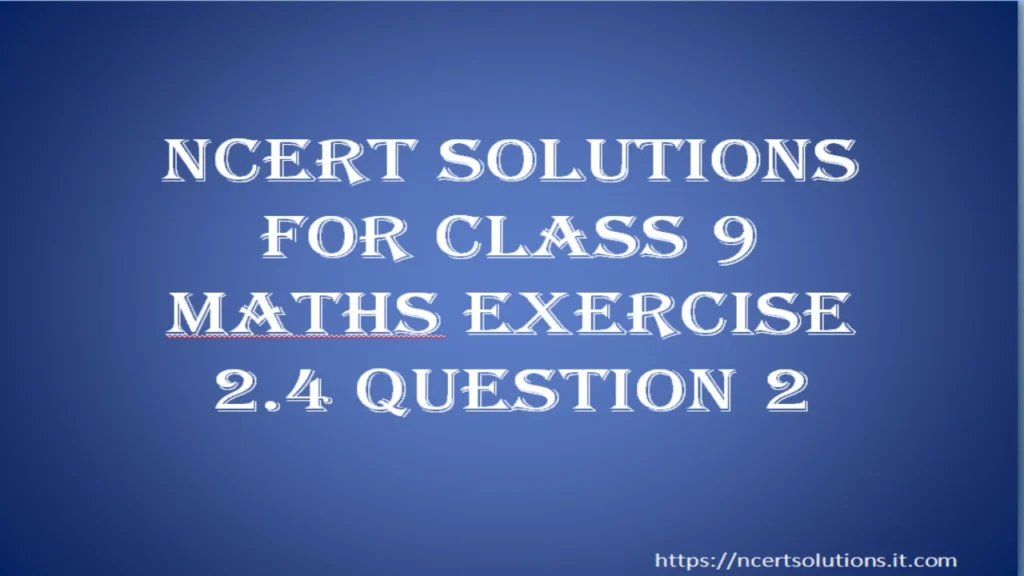NCERT Solutions for Class 9 Maths Exercise 2.4 Question 12

Understanding the Question 🧐
In this problem, we are asked to **verify** another important algebraic identity. Verification involves proving that the Left Hand Side (LHS) of the equation is equal to the Right Hand Side (RHS). Our strategy will be to start with the more complex-looking RHS and simplify it step-by-step until it matches the LHS. This ncert solutions page provides a clear, step-by-step proof.
Verify that: &&x^3 + y^3 + z^3 – 3xyz = \frac{1}{2}(x+y+z)[(x-y)^2 + (y-z)^2 + (z-x)^2]&&
Verifying the Identity 📝
We will begin by expanding and simplifying the Right Hand Side (RHS).
Step 1: Start with the Right Hand Side (RHS).
RHS = &&\frac{1}{2}(x+y+z)[(x-y)^2 + (y-z)^2 + (z-x)^2]&&
Step 2: Expand the squared terms inside the brackets.
We use the identity &&(a-b)^2 = a^2 – 2ab + b^2&& for each term:
- &&(x-y)^2 = x^2 – 2xy + y^2&&
- &&(y-z)^2 = y^2 – 2yz + z^2&&
- &&(z-x)^2 = z^2 – 2zx + x^2&&
Step 3: Substitute these expansions back into the RHS.
RHS = &&\frac{1}{2}(x+y+z)[(x^2 – 2xy + y^2) + (y^2 – 2yz + z^2) + (z^2 – 2zx + x^2)]&&
Step 4: Combine the like terms inside the large brackets.
Let’s group the squared terms and the product terms together.
RHS = &&\frac{1}{2}(x+y+z)[(x^2 + x^2) + (y^2 + y^2) + (z^2 + z^2) – 2xy – 2yz – 2zx]&&
RHS = &&\frac{1}{2}(x+y+z)[2x^2 + 2y^2 + 2z^2 – 2xy – 2yz – 2zx]&&
Step 5: Factor out the common factor of 2 from the large brackets.
Notice that every term inside the second bracket is multiplied by &&2&&. We can factor this out.
RHS = &&\frac{1}{2}(x+y+z) \cdot 2 [x^2 + y^2 + z^2 – xy – yz – zx]&&
Step 6: Cancel the &&\frac{1}{2}&& and &&2&&.
The &&\frac{1}{2}&& at the front and the factor of &&2&& cancel each other out.
RHS = &&(x+y+z)(x^2 + y^2 + z^2 – xy – yz – zx)&&
Step 7: Recognize the simplified expression.
This resulting expression is the standard factored form of &&x^3 + y^3 + z^3 – 3xyz&&, which we worked with in Question 11.
Therefore, RHS = &&x^3 + y^3 + z^3 – 3xyz&&.
Step 8: Conclude the verification.
Since our simplified RHS is identical to the LHS of the original equation, the identity is proven.
Thus, LHS = RHS. Hence, verified.
- This identity is an important alternative form for &&x^3 + y^3 + z^3 – 3xyz&&.
- The proof relies on the basic expansion of &&(a-b)^2&&.
- The steps are systematic: Expand, Combine, Factor, and Cancel.
FAQ
Q: What is the main objective of this question?
A: The main objective is to ‘verify’ an algebraic identity. This means we need to prove that the expression on the Right Hand Side (RHS) is equivalent to the expression on the Left Hand Side (LHS).
Q: What is the general strategy to verify this identity?
A: The best strategy is to start with the more complex side, the RHS, and simplify it. We expand the squared terms, combine like terms, and manipulate the expression until it becomes identical to the LHS.
Q: Which basic identity is needed to start the simplification?
A: The fundamental identity required is the formula for the square of a binomial difference: &&(a-b)^2 = a^2 – 2ab + b^2&&. This is used to expand &&(x-y)^2&&, &&(y-z)^2&&, and &&(z-x)^2&&.
Q: Why is there a &&\frac{1}{2}&& factor on the Right Hand Side?
A: The &&\frac{1}{2}&& factor is included to balance the equation. When the squared terms are expanded and combined, a common factor of &&2&& emerges. The &&\frac{1}{2}&& then cancels out this factor of &&2&&, simplifying the expression to its standard form.
Q: How does this identity relate to the one in Question 11?
A: This is an alternative, but equivalent, form of the identity from Question 11. It shows that &&x^3 + y^3 + z^3 – 3xyz&& can also be expressed in terms of the squares of the differences between the variables.
Q: What does the expression &&(x+y+z)(x^2 + y^2 + z^2 – xy – yz – zx)&& simplify to?
A: This expression is the standard factored form of &&x^3 + y^3 + z^3 – 3xyz&&.
Further Reading
To explore more advanced polynomial identities, you can refer to the official NCERT textbook and supplementary materials on their website: https://ncert.nic.in/


